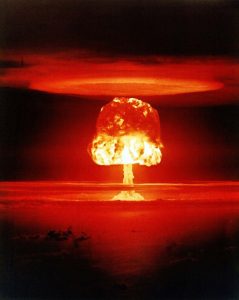
By Michael O’Neill
“Rest in Peace” Fed Funds bears. Fed Chair Jerome Powell and his colleagues on the Federal Open Market Committee buried those bruins in a dot-plot forecast. The new guesses suggest that US rates are not going lower in 2020 or even the following year. The Chairman reminded markets that the Fed lowered interest rates three times in 2019, and pointed out that policy is not on a preset course. He added that leaving rates unchanged gives policymakers room to cut them to support the economy in the event of a future downturn.
The news triggered widespread US dollar selling, a small rally on Wall Street, and a tiny drop in bond prices. The move may be more of a knee-jerk reaction to market expectations. However, a closer reading of the statement and press conference transcript suggests, the Fed outlook is lacking in confidence, and interest rate direction is still a coin-toss.
Persistently sluggish inflation growth led to three rate cuts in 2019. Weak inflation will still be a problem in 2020, and Powell admitted as much in his press conference statement. He said “Over the 12 months through October, total PCE inflation was 1.3 percent and core inflation, which excludes volatile food and energy prices and is a better indicator of future inflation, was 1.6 percent. The Feds inflation target is 2.0%.
In October, the Fed was concerned that “weakness in global growth and trade developments have weighed on the economy and pose ongoing risks.” Did those risks disappear? The FOMC did not specifically mention “trade developments” as a risk in the December statements. Perhaps the Fed has inside knowledge that a Phase 1 trade deal, complete with tariff rollbacks is imminent. If not, look for “trade risks” to be included in the next statement.
Mr Powell took time out to “humble-brag,” crediting the Committee’s decisions throughout the year for leaving “monetary policy well-positioned to serve the American people by supporting continued economic growth, strong job market, and inflation near target.“ To paraphrase Albert Einstein, that looks like a case of “changing the facts to fit the forecasts.”
The Fed’s interest outlook for 2019 released in December 2018, was out-to-lunch. They justified the four prior rate hikes because employment was near record lows, and inflation was low but stable. Those reasons are rather similar to what was said when they cut rates three times in 2019.
Powell did not admit that the Fed’s 2019 outlook was wrong. Instead, he said it was just that “their views of the path of interest rates that would best achieve our employment and inflation objectives changed significantly, as the economy faced some important challenges from weaker global growth and trade developments.”
The Cambridge Dictionary defines someone is wrong “if they are not correct in their judgment or statement about something.” Last year at this time, the Fed’s 2019 outlook proved to be many curds short of poutine. Why will their 2020 view produce a different result?

“Where’s the curds” Photo: Pixabay
The European Central Bank (ECB) went where the Fed feared to tread. ECB President Christine Lagarde defended the December 12 decision to leave Eurozone rates unchanged, in part because “The ongoing weakness of international trade in an environment of persistent global uncertainties continues to weigh on the euro area manufacturing sector and is dampening investment growth.” She went on to say that “The risks surrounding the euro area growth outlook, related to geopolitical factors, rising protectionism and vulnerabilities in emerging markets, remain tilted to the downside, but have become somewhat less pronounced.”
The ECB and the Fed believe that monetary policy accommodation is still necessary to bring inflation to 2% over the medium term, which is pretty much what both Central Banks have been saying for the past two years.
The Bank of Canada is another central bank leaving interest rates unchanged. They continue to be concerned about downside risks to the economy from ongoing trade conflicts. Those concerns are echoed by their colleagues at the ECB, Bank of Japan, Reserve Bank of Australia, and Reserve Bank of New Zealand.
Those worries may come to fruition if the American’s follow-through on plans to raise tariffs by 15% on Chinese imports on December 15. China is supposedly unwilling to sign a Phase 1 trade deal unless all existing tariffs are rolled back. They are also annoyed at the US government for what they perceive as “meddling in China’s domestic affairs” after the Senate passed the Hong Kong Rights bill and then the Uighur Act. Then again, maybe not. Perhaps trade trumps politics. That’s is what President Trump wants markets to believe. On December 12, he tweeted “Getting VERY close to a BIG DEAL with China. They want it, and so do we.”
Nevertheless, the signing of a US/China Phase 1 trade deal is not the end of central bank fears of “downside risks from ongoing trade conflicts,” but likely just a shift to a different theater of war and Europe has a target painted on it.
As long as Trump the Tariff Guy is in the White House, the FOMC meeting isn’t really “the end of the world as we know it,” or even the end of low US interest rates, despite what the dot-plot forecast suggests.





